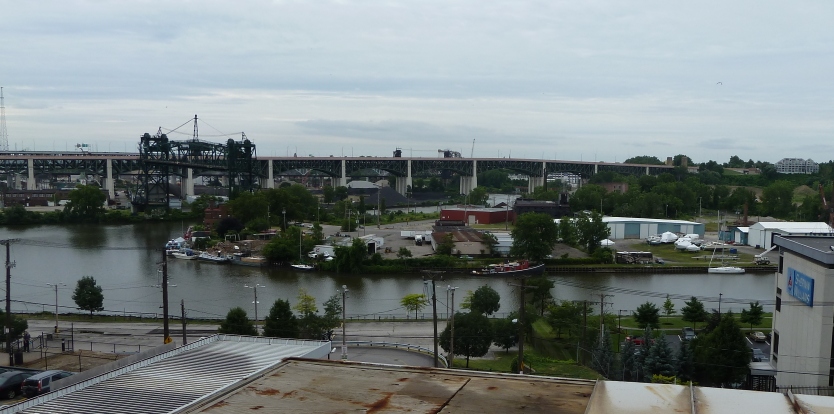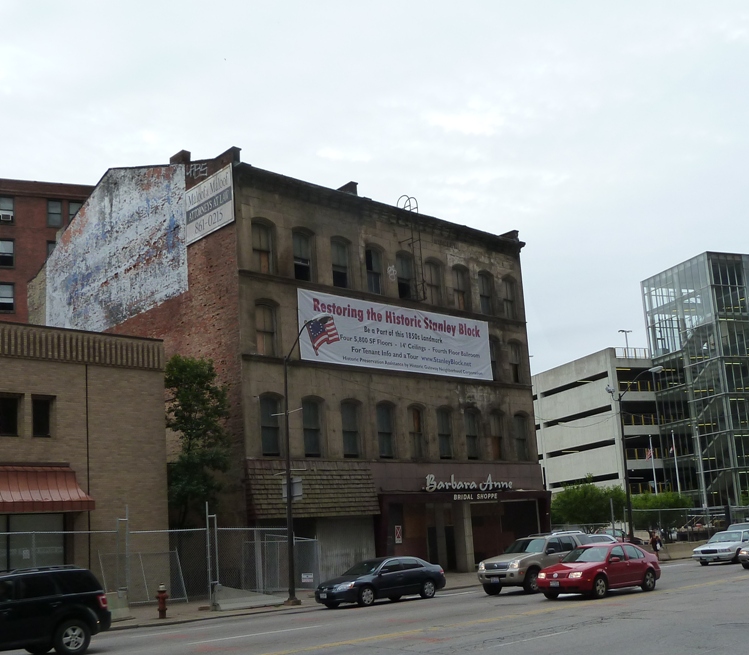“Are you looking at Cleveland with different eyes?” asked Michele via email. “Are you seeing the history hiding behind the modern?”
My writing friend has hit on the refrain of the writer of historical fiction. We can go looking for the past, but it might just be paved over.
Around 1844, Johann Rapparlie founded Rapparlie Smith and Wagons in downtown Cleveland, Ohio at the corner of Michigan and Seneca Streets. He situated his business just a block away from an elbow of the crooked Cuyahoga River and the mouth of the Ohio Canal. Today, the Canal is long since filled in, and the area consists of parking lots for Tower City. I took this photo this morning from the end of W. 3rd Street in downtown Cleveland. (In 1900, the Cleveland maps were changed from the street names to road numbers. Hence, Seneca St. is now W. 3rd.)

 My great-great-grandfather Michael Harm apprenticed as a blacksmith in Rapparlie Smith and Wagons. In 1865 he founded a carriageworks of his own on Champlain Street. It took me a while to find where it used to be, since Champlain Street no longer exists. In studying old maps of Cleveland at the Public Library, I found it was where the Terminal Tower now stands. As I roamed the streets of Cleveland this morning, I felt that much prouder of my thesis, as if I’ve performed a resurrection of a long-buried past.
My great-great-grandfather Michael Harm apprenticed as a blacksmith in Rapparlie Smith and Wagons. In 1865 he founded a carriageworks of his own on Champlain Street. It took me a while to find where it used to be, since Champlain Street no longer exists. In studying old maps of Cleveland at the Public Library, I found it was where the Terminal Tower now stands. As I roamed the streets of Cleveland this morning, I felt that much prouder of my thesis, as if I’ve performed a resurrection of a long-buried past.
 I was pleased to see an effort is underway to preserve an 1850s relic. This building, near the Terminal Tower, was apparently around when Michael Harm first came to Cleveland, and is in the process of being renovated. Hurray!
I was pleased to see an effort is underway to preserve an 1850s relic. This building, near the Terminal Tower, was apparently around when Michael Harm first came to Cleveland, and is in the process of being renovated. Hurray!

5 responses to “Paved over pasts”